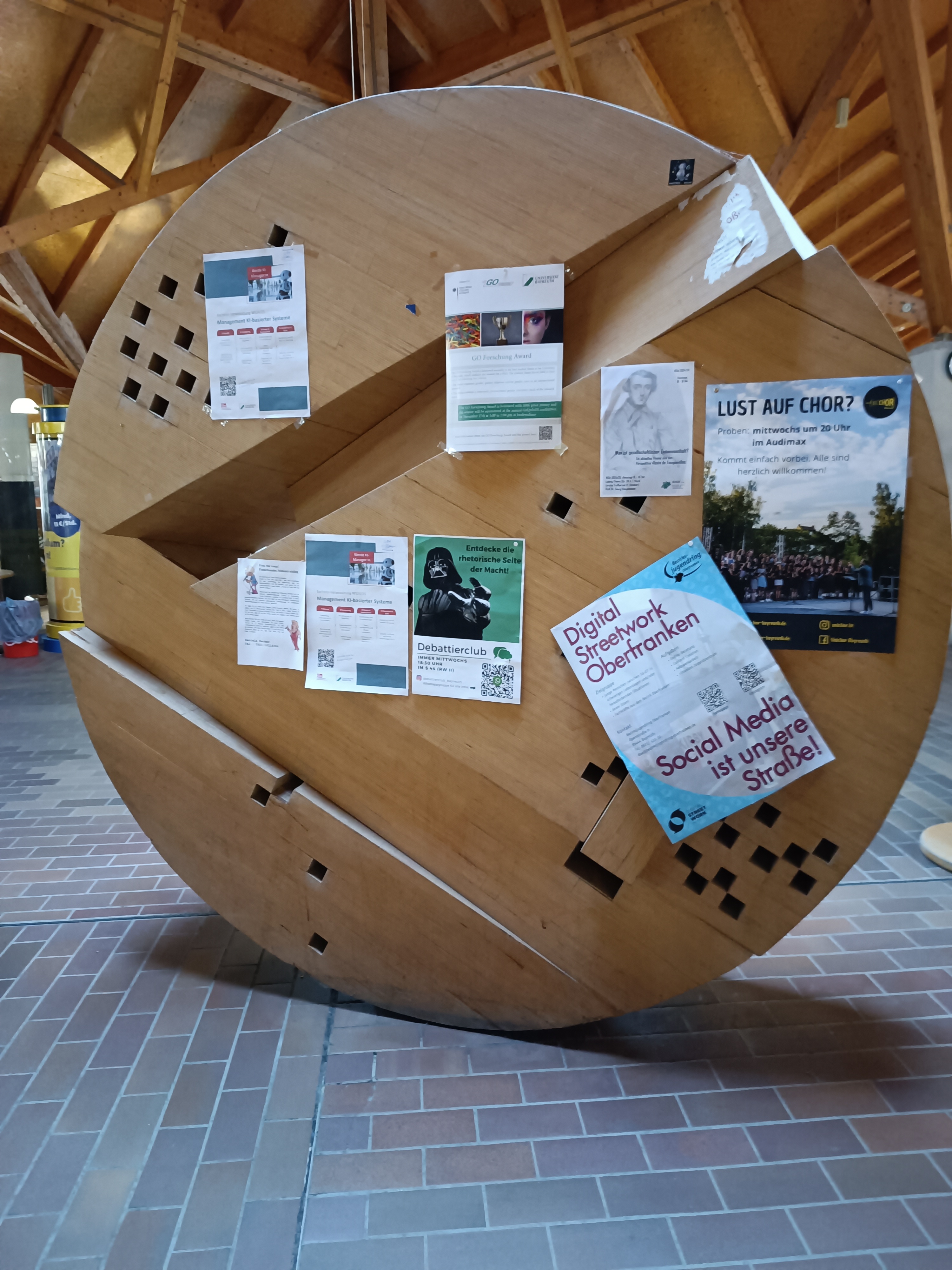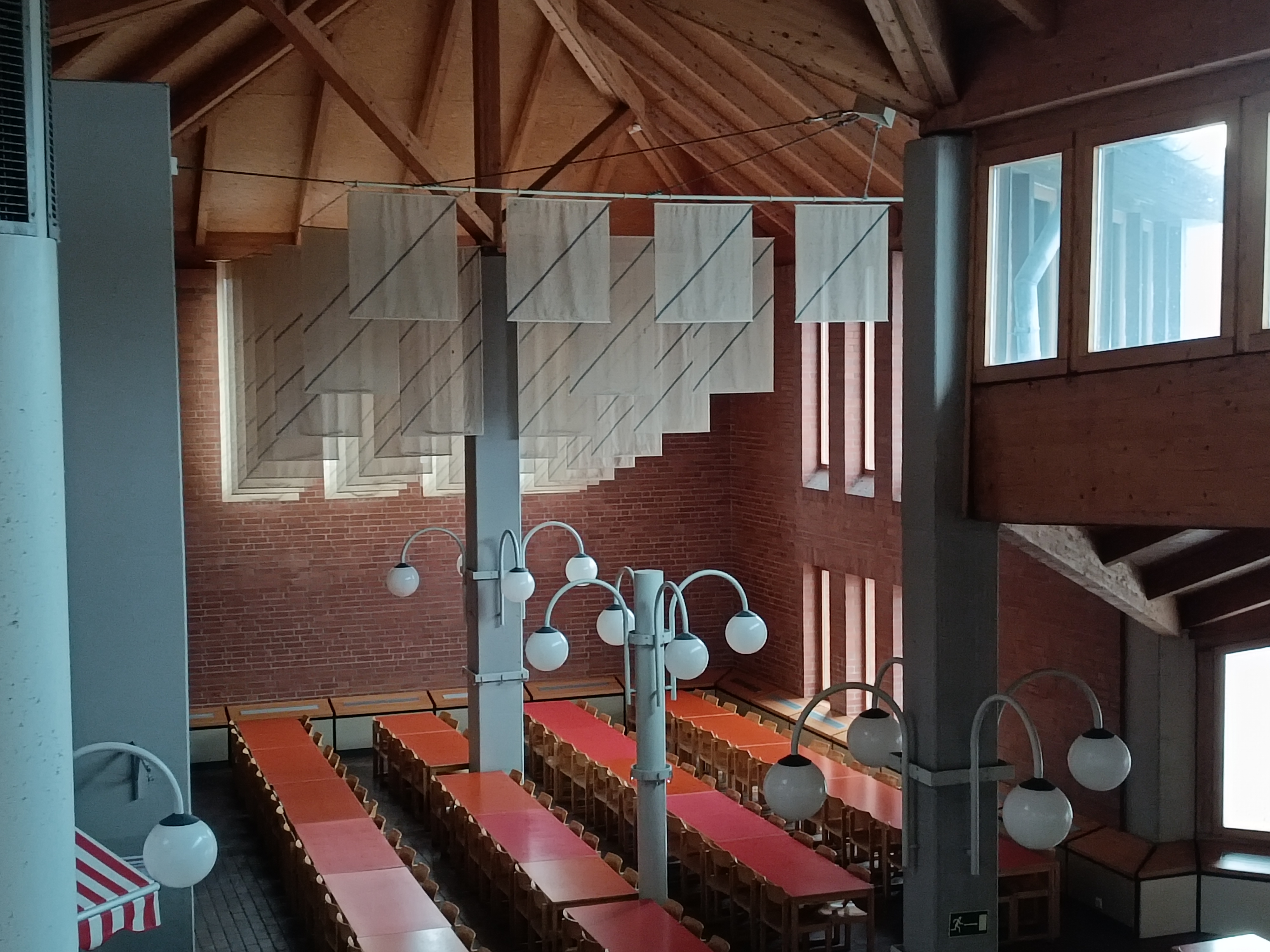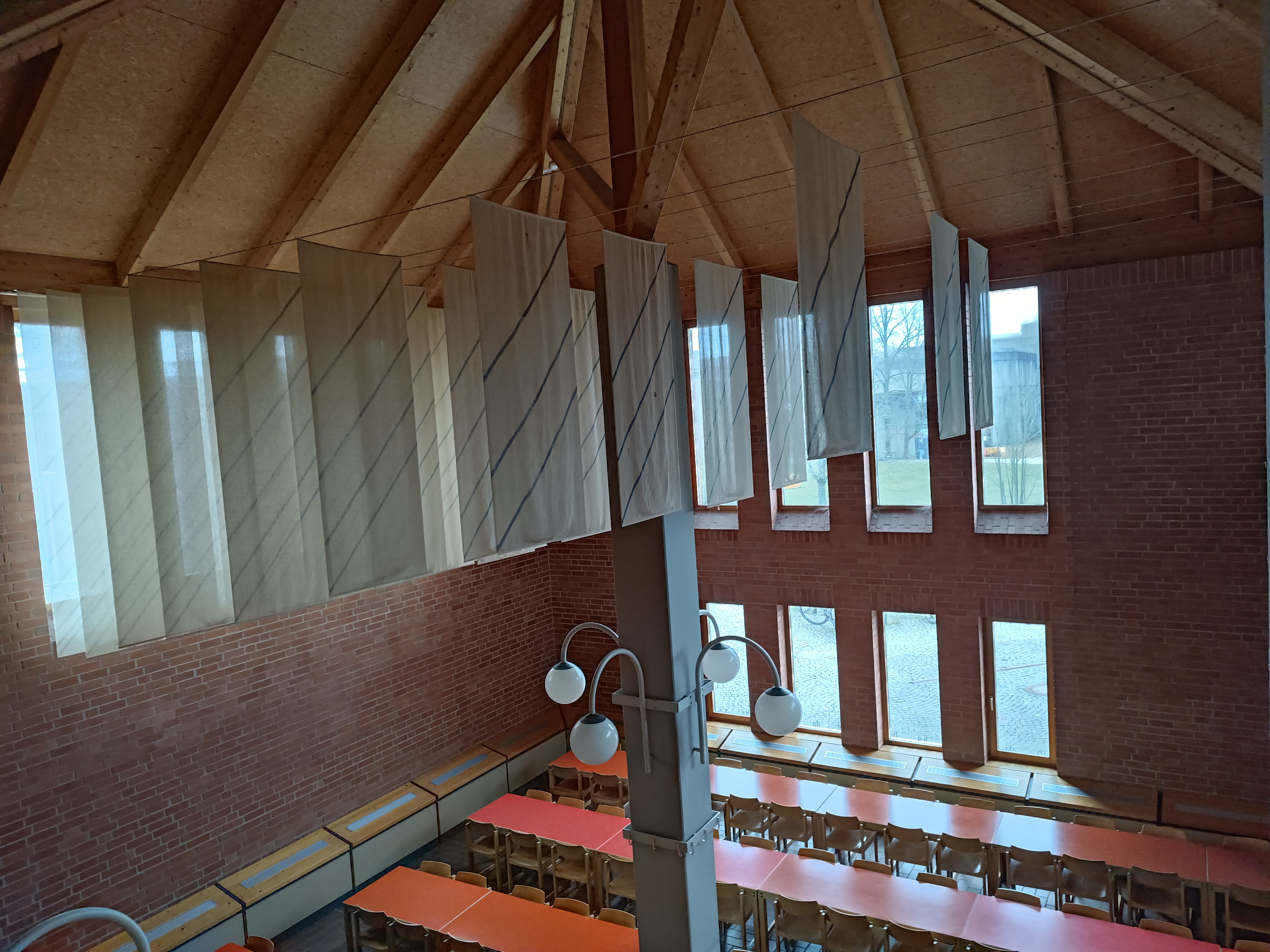Mensa on the campus of the University of Bayreuth

Right in the entrance area of the canteen (Mensa) is an impressive wooden sculpture by Hermann Frauenknecht from 1984. This sculpture, a 2.40 meter high disc made of industrially glued laminated veneer lumber, was commissioned by the Free State of Bavaria. The disc-shaped sculpture is broken up by positive-negative cut-outs, giving it a special dynamism and lightness.
Hermann Frauenknecht, born in 1929 in Altdorf near Nuremberg, was a versatile artist who worked as both a painter and a sculptor. After training as a decorative painter and studying painting and graphics at the Academy of Fine Arts in Munich, he turned his attention to sculpture from 1967 onwards. His works can be found in numerous public spaces in Nuremberg, Bayreuth, Schweinfurt and Altdorf.
A quote from Frauenknecht reads*: “When I throw a stone vertically into the air, there is a moment of calm where the forces acting on the stone balance each other out. I always try to achieve this moment of equilibrium of forces.” This shows his sensitivity to the materiality and effect of his works in space. The sculpture in the Unimensa also conveys a sense of balance and harmony through its form and structure.
Frauenknecht's sculptures are often abstract, but he himself resisted this categorization. For him, his works were “objects for aesthetic use” that conveyed a deeper message through their formal structures and the balance of forces. In fact, the boundaries between art and everyday objects are often blurred, which is particularly evident in this work. Among students or employees of the university, it is also known by the nickname “umbrella stand” because of its recesses. As can be seen in the photo, this sculpture is often used as a billboard for all kinds of notices due to its very prominent location directly in the entrance area of the canteen.

Frauenknecht's art thus merges with the everyday reality of university members, who pass by this work almost every day on their way to lunch. However, it is well worth taking a second, closer look at this sculpture from different angles and discovering the fine details and harmonious balance that Frauenknecht has masterfully achieved in this work.
(*Source: https://www.hermann-frauenknecht.de)

Another example of the integration of art into everyday life is the impressive textile object in the main dining hall of the University of Bayreuth's canteen. It is a work by the artist Hanns Herpich from 1984 and consists of hand-woven textile panels with a linen structure that are 3.50 meters long and 0.90 meters wide.
The nine-metre-long lengths of fabric are printed with colored stripes and arranged in different levels. This arrangement refers specifically to the changing incidence of light through the southern windows of the dining room. This creates a dynamic and lively effect that invites students and visitors to the canteen to consciously perceive the interaction of light, color and form and to engage with the art in public space.

Hanns Herpich*, born in Nuremberg in 1931, was a versatile artist who, in addition to painting and graphic art, also worked intensively with textile art. In 1990, he was appointed professor of textile art at the Academy of Fine Arts in Nuremberg, which he held until 1999. Herpich was active as a textile artist well into his 80s. He died in Nuremberg in July 2022 at the age of 88. Herpich's works are often characterized by their clear formal language and harmonious integration into the architectural space.
The textile object in the refectory is an outstanding example of Herpich's ability to combine art and architecture. The color stripes of this work are not only an aesthetic eye-catcher. The textile strips pick up on the natural lighting conditions and intensify them through their arrangement. Depending on the time of day and the incidence of light, the perception of the artwork changes, creating a fascinating interaction between art, space and viewer.
(*Source: Hanns Herpich – Wikipedia)
